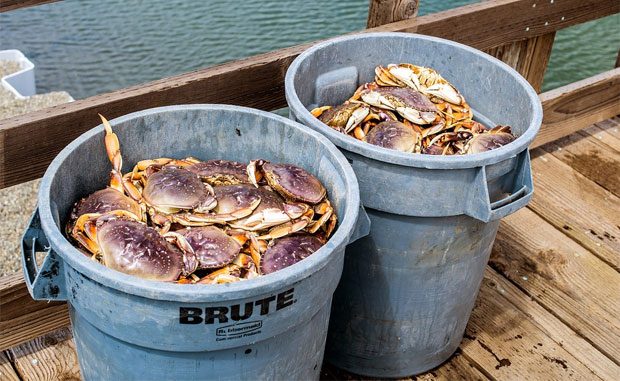Seafood School – Everything About the Snow Crab
Seafood School – Everything About the Snow Crab
The snow crab, one of the traditional products of Alaska, begins to be a regular in Norwegian waters. This species of crab was first seen in the Barents Sea in 1976. Since then, the population has grown rapidly. So much so, the experts at the Norwegian food research center predict that it may become a high-potential species for the Nordic fishing industry. The research now underway focuses on analyzing the shelf life and quality of the product, as well as the reuse of the raw material of snow crab remains to ensure sustainable exploitation of the resource. In addition, scientists are working with commercial companies in the development of new bait technology to capture this species.Snow crab may have become a very popular crustacean on the global market – especially thanks to its beloved snow-white meat, sweet taste and firm texture – however, many consumers are not yet familiar with the origins of this crustacean.
Currently there are four crab species that we call snow crab (opilio, bairdi, japonicus and tanneri), but the most common and most important on the market is the opilio (Chionoecetes opilio).
The opilio lives in sea waters less than two hundred meters deep on soft, muddy seabeds in the cold northern waters of the Atlantic and the Pacific Ocean. It is the only snow crab species that is caught (with baited bait) in both oceans. In the Atlantic Ocean, these crabs occur in Greenland and from Newfoundland to the Gulf of Maine. In the Pacific Ocean healthy populations are found in the far north of Alaska to North Siberia and in the southern Bering Sea from Japan to Korea. This is one of the most widespread types of crabs in the world. With its large population, snow crab is a potential source of animal protein from the sea, now and in the future.
Origin
The majority of snow crabs come from Korea, but most producers have their own ships, which helps to guarantee traceability and supply. In Korea, the snow crab, or “daega” as it is called, is found in the cold waters of the northern parts of the Baltic Sea. In Korea, it is an important ritual to eat New Year’s Daughter – reportedly the eater would then have good health and good physical resistance for the rest of the year. The snow crab has become part of East Asian culture and therefore, is one of the mandatory menus in homes, especially those who claim to be Korean.
A queen is not a king
There are many types of crab that are caught for sale. Snow crab may be sold often next to king crab (red, blue and brown variant), but both animals are very different. The king crab with its +/- 5 kg is the largest member of the crab family and can grow up to twice as big as the snow crab. King crabs also have three pairs of legs, a squeeze scissors and a larger flatbed, while snow crabs have five pairs of legs. The legs of the snow crab are also longer and thinner.
The world is now increasingly aware of the importance of eating seafood regularly and of course crabs cannot be ignored as an important element. For information, the content of vitamins and minerals in crab, especially those living on shores such as Dungeness crab, is often associated with cardiovascular health, bone growth and strengthening of the natural immune system. Hopefully this article can enrich your knowledge about crabs and their benefits for health.
Guest Article.






